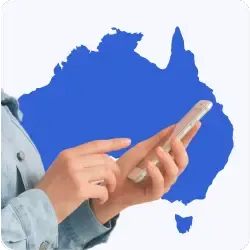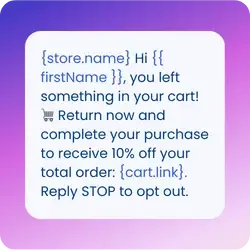Text Message
A text message is a short electronic message sent from one device to another, typically via a mobile network or an online SMS service. Most associated with SMS (Short Message Service) or MMS (Multimedia Messaging Service), text messages enable real-time, direct communication between individuals or between systems and individuals. Modern SMS systems use unicode encoding to support multiple languages, symbols, and emojis, ensuring messages can be accurately displayed across different devices and regions.
A Brief History of the Text Message:
The first text message was sent on 3 December 1992 by Neil Papworth, a British engineer, who typed "Merry Christmas" from his computer to a Vodafone mobile phone. SMS (Short Message Service) was developed in the 1980s as part of the GSM standards, originally intended for network engineers to communicate.
Text messaging gained popularity in the late 1990s and early 2000s, especially among younger users, as mobile phones became more widespread and SMS was supported across networks. By the mid-2000s, texting had become a global phenomenon, revolutionising personal and business communication with its speed and convenience.
While newer messaging apps have since taken over in many regions, SMS remains widely used, especially for two-factor authentication, alerts, and business communications, thanks to its simplicity and universal compatibility.
What Does a Text Message Include?
A text message can include:
Short written content (up to 160 characters in standard SMS)
Multimedia elements such as images, videos, and audio (when using MMS)
One-way or two-way communication, depending on the platform used. Conversational SMS takes this further by enabling ongoing, real-time dialogue, improving engagement and customer experience.
Message metadata such as timestamps, sender ID, and delivery status
Hyperlinks, shortcodes, or promotional codes for sms marketing purposes
Alerts, updates, confirmations, and reminders sent from automated systems
Why Are Text Messages Important?
With 6 billion text messages sent every day, text messaging remains one of the most accessible and immediate forms of communication. They are compatible with virtually all mobile devices, do not require internet access, and are often read within minutes of delivery. Businesses use text messaging to:
Communicate quickly and efficiently with customers and staff
Send time-sensitive notifications, including security alerts or delivery updates
Provide customer service and technical support
Launch SMS marketing campaigns and drive user engagement
Facilitate two-factor authentication (2FA) and secure logins
With high open rates and broad reach, text messages continue to be a vital communication channel for both personal and business use.
Types of Text Messaging Services
Text messaging can be categorised into several service types based on how messages are sent and received. Each type serves a different purpose and offers specific features tailored to personal, business, or system-based communication.
P2P (Person-to-Person): Traditional texting between individuals, typically limited in volume and regulated to prevent spam.
A2P (Application-to-Person): Messages sent from a system or platform to individuals, commonly used for notifications, marketing, and customer engagement.
Transactional Text Messaging: Automated texts triggered by user actions, such as order confirmations, OTPs (one-time passwords), or appointment reminders.
Promotional Text Messaging: Marketing-based messages designed to promote products, events, or special offers, often requiring prior customer opt-in.
Two-Way Text Messaging: Enables interactive communication between businesses and customers, such as support inquiries or surveys.
Understanding these types helps businesses choose the right messaging solution based on their communication goals, whether it’s customer support, marketing, or alerts and system notifications.
SMS Marketing Laws
Discover Australia's SMS marketing laws and the requirement for SMS consent.
 SMS Laws Explained
SMS Laws Explained 









